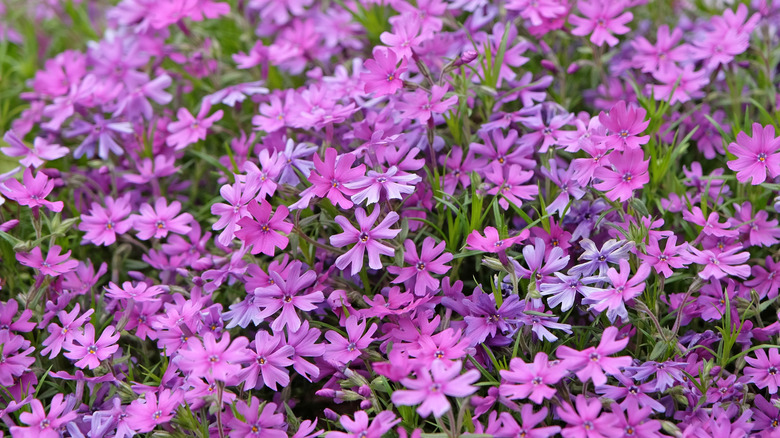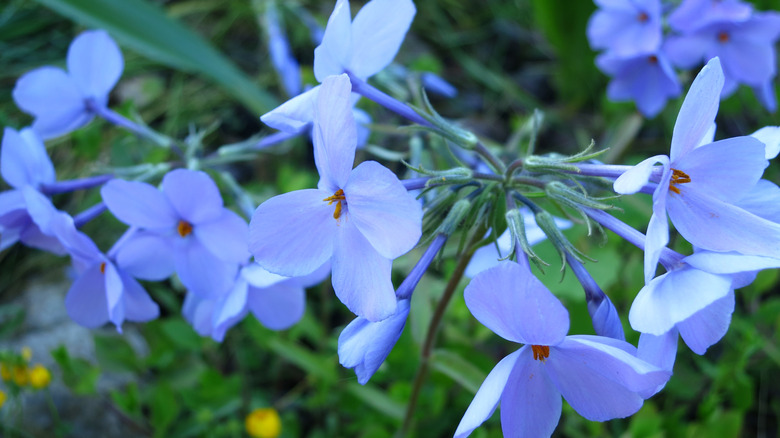How To Grow Creeping Phlox From Seed For A Colorful Ground Cover
An Appalachian native perennial boasting stunning bluish-purple flowers and semi-evergreen foliage, creeping phlox (Phlox stolonifera) can be a fantastic choice for ground cover under trees, around bulb flowers, or in other garden areas that get a bit of shade. In ideal conditions, it will spread vigorously via above-ground runners — or stolons – to form mats, and is also capable of self-seeding to create even larger colonies. Although it's generally easier to propagate creeping phlox by taking cuttings of existing plants or dividing larger clumps, you can also start your phlox patch from seed with some timing and preparation.
If starting your creeping phlox seedlings indoors, begin the process approximately six to eight weeks before the frosts are expected to end. Start your seedlings in either trays or pots, as long as the soil is well-drained. Make sure to maintain consistent moisture and light either via window or grow lamp. Be patient, keeping in mind that creeping phlox can be a very slow starter.
You can also try sowing seeds directly in your garden, about ⅛ inch deep, once the soil has begun to warm in spring. There are also plants or plugs available for transplantation due to the slow germination of creeping phlox; try planting these in autumn. If you've already planted this flowering ground cover to add color to the garden, but you're craving more, divide your existing phlox plants in spring.
How to care for creeping phlox
Ideal for USDA Hardiness Zones 5 through 9, creeping phlox favors moist, slightly acidic soils rich with organic matter, though it also isn't usually too precious about soil conditions. It will grow in either partial shade or sun, but some gardeners say it doesn't do quite as well in direct full sun. Keep very young plants well watered. Once they're established, however, they're quite hardy and can easily weather a drought. Deer and rabbits generally leave it alone, and it's even fairly tolerant to being stepped on (within reason, of course)!
Be aware that particularly humid summers can introduce powdery mildew — you can mitigate this by keeping up with deadheading and making sure there's space for good air circulation. Additionally, make sure the soil isn't frequently too wet, as you might end up with a slug problem. If conditions are exactly to creeping phlox's preferences, you might want to take extra care to remove spent blooms before they go to seed, or it can become weedy and take up more real estate than you may have anticipated. Although with its fragrant blooms and attractiveness to insect pollinators, you might not mind an excess of creeping phlox, the gorgeous purple ground cover that butterflies adore!

